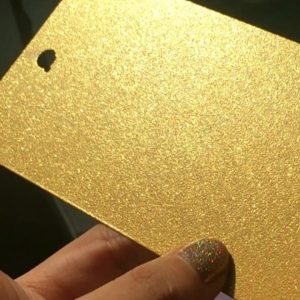Bonded metallic powder coating supply a constant metallic effect
Posted by: doPowder | on June 15, 2020

Bonding In 1980, a technique of bonded metallic powder coating was introduced for adding effect pigments to powder coating. The process involves adhering the effect pigments to the powder coating particles to prevent separation during application and recycling.
Following research during the 1980s and early ’90s, a new continuous multi-stage process for bonding was introduced. The main advantage with the Bonding process is the degree of control over the entire operation. Batch size becomes less of an issue and there are significantly improved application characteristics. This process was successfully introduced into the United States during 1996. To develop the process, it was first necessary to have a viable method to determine that a product was correctly bonded. Several techniques have been developed to check for bonding quality, including photo microscopy, various charging techniques, and the cyclone test .
Testing was carried out to quantify and compare the color difference effect caused by both dry blending and Bonding. Although it is difficult to obtain a single value for the color measurement, which is proportional to the pigment content, it was decided to use the lightness factor at five angles. The lightness curve of the base material is defined as 0% and the virgin metallic powder as 100%. Material was passed through the cyclone and L- values taken for each run at the five angles. After three runs the dry blended powder shows an effect loss of 50% .
You are now asking “why would anyone ever use non-bonded?” and “how can I tell if my powder is bonded or not”. The only reason anyone uses non-bonded is because they are much cheaper. Powder manufacturers generally aren’t creating new, non-bonded formulations, but they have several stock colors that they may continue to make that way because customers continue to buy them (some customers never figure out the difference…i.e., they may have a part too small to notice the inconsistencies). However, a few manufacturers might still be developing non-bonded powders due to the fact that not all of the effects required by their customers are possible by bonding.
All powder chemistries have been successfully bonded including hybrids, TGIC, Primid, and GMA acrylics

Comments are Closed